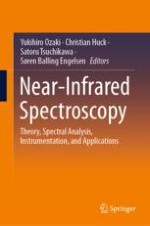This book provides knowledge of the basic theory, spectral analysis methods, chemometrics, instrumentation, and applications of near-infrared (NIR) spectroscopy—not as a handbook but rather as a sourcebook of NIR spectroscopy. Thus, some emphasis is placed on the description of basic knowledge that is important in learning and using NIR spectroscopy. The book also deals with applications for a variety of research fields that are very useful for a wide range of readers from graduate students to scientists and engineers in both academia and industry. For readers who are novices in NIR spectroscopy, this book provides a good introduction, and for those who already are familiar with the field it affords an excellent means of strengthening their knowledge about NIR spectroscopy and keeping abreast of recent developments.
